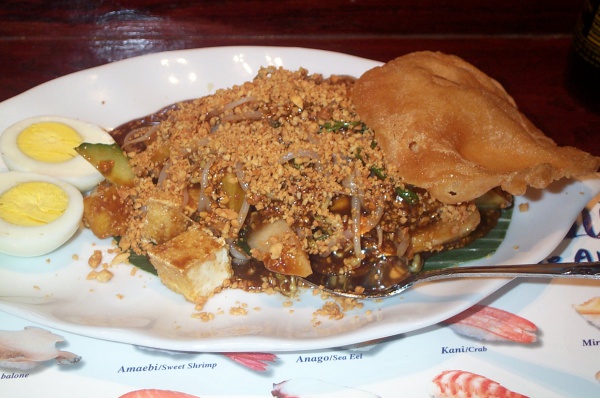Facts About Rojak
Rojak, also known as rujak, is a cherished traditional fruit and vegetable salad enjoyed across Indonesia, Malaysia, and Singapore. The term "rojak" means "mixture" or "eclectic mix" in Malay, aptly describing this vibrant dish. The most popular version, rujak buah, is a tangy and spicy fruit salad dressed with a blend of ground chili, palm sugar, and peanuts. While Indonesian rujak primarily features fresh fruits and vegetables, its Malaysian and Singaporean counterparts often include Indian-inspired ingredients like fried tofu, hard-boiled eggs, and prawn fritters.
The origins of rujak are ancient and varied, with diverse regional interpretations across Southeast Asia. It is considered one of the oldest dishes in ancient Java, with references dating back to the Mataram Kingdom era. The introduction of chili peppers and peanuts likely occurred during the early colonial period. In Indonesia, rujak holds cultural significance, often prepared for prenatal ceremonies and other traditional events.
Indonesian rujak comes in numerous varieties, including rujak buah, rujak cuka, rujak tumbuk, and rujak serut, each with its own unique ingredients and preparation methods. In Malaysia and Singapore, you'll find different versions like rojak mamak, rojak buah, rojak Penang, and rojak Bandung or sotong kangkung. These variations showcase the diverse culinary influences in the region, each offering distinct flavor profiles and ingredients.
More than just a culinary delight, rojak and rujak carry deep cultural and historical significance, reflecting the rich heritage and diverse influences in Indonesian, Malaysian, and Singaporean cuisines.

 Singapore
Singapore